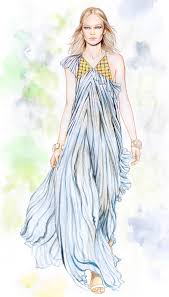I came across the work of Minna Havas and instantly loved the photorealistic qualities to her work and her colouring methods. I really want to develop my drawing and painting skills and would love to be able to recreate something as realistic as the works she produces.
I found her bio really interesting to read. Source from
here
Minni Havas (b. 1983) is a freelance illustrator based in Helsinki. Having studied fashion design at the University of Art and Design Helsinki, her focus is mainly on fashion illustration. Minni uses colour pencils to draw detailed pictures with magical colours and arrangements somewhere in the borderlands of the real and the imaginary.


Known for her photorealistic drawings of girls, Minni grew up admiring her dad’s airbrush art collection and reading cartoons such as Roger Leloup’s Yoko Tsuno. “What a beautiful character,“ she says. “I love the way Leloup draws a human face.” As a child, Minni started imitating Leloup’s characters as well as drawing people from books and magazines together with her sister Milja – the dark-haired girl who often appears in Minni’s drawings today. Already then, she found herself getting into details and drawing “in the right way”, jealous of the sister who wasn’t that strict. “I’m so particular about things,” she says. “Things need to follow a certain order.”
The way Minni talks about things like the shades of red and blue under human skin, the movement of materials in an image, or hard and soft colour pencils, demonstrates the fact that her work is as much about the (often very dogmatic) process as the end result. The way of Minni’s working is very technical and quite slow. At the moment, she works with collages of photographs. “I take a hand from one image, a face from another, and the hair from somewhere else,” she explains. In the future, her dream is to get a photographer, and maybe also a stylist, to work with.
When Minni draws, she doesn’t take up too much space but needs a lot of natural light. She always draws by the window. In addition to water solvent colour pencils of different strengths, her drawing equipment includes a rubber of which she cuts out little pieces with a surgeon’s knife, an automatic sharpener she got as a Christmas present from her boyfriend, a set of small brushes for the most detailed lines as well as a small vacuum cleaner for cleaning the dust coming out of the pencils (if she didn’t clean the dust, even a small drop of water on it might destroy the drawing). In the end, she uses a scanner and later Photoshop only to make the drawings look like they were on paper again. Trying to use the computer as little as possible, Minni aims to maintain a sensation of authenticity in her work – the childlike feeling of ‘wow, someone actually drew that by hand’.
“I’m intrigued by the possibilities of drawing,” Minni says. “I can draw things from my head that would be impossible to photograph.” On the other hand, she gets very inspired by interesting looking models and the challenges of simulating reality – especially certain body parts. Minni’s favourite one is the mouth, which is also the hardest one to draw. Drawing bare skin takes the most of her time. “In addition to volume, it contains a lot of detail,” she explains. “Skin also takes up a lot of brown colour, which is the colour pencil that always runs out first.”
Lately, Minni has been working on illustrations for magazines as well as drawings for projects such as advertising campaigns or a series of stamps for the Finnish mail. She is also starting up a clothing collection with her friend Anne in order to expand her work into three dimensions. “The clothing collection will compliment my very detailed working with the illustrations,” Minni explains. “When it comes to fashion design, Anne is the more technical one of us two.” Like this project, Minni is open for contrast and multidisciplinary challenges in commissions to come – and dreaming of making a big fashion editorial for one of her favourite magazines together with her in-house photographer and stylist to be.
Bio by Jenna / OK Do

 Online Image Available from http://www.tomgauld.com/index.php?/portfolio/ghosts/ Accessed 24st December 2012
Online Image Available from http://www.tomgauld.com/index.php?/portfolio/ghosts/ Accessed 24st December 2012











